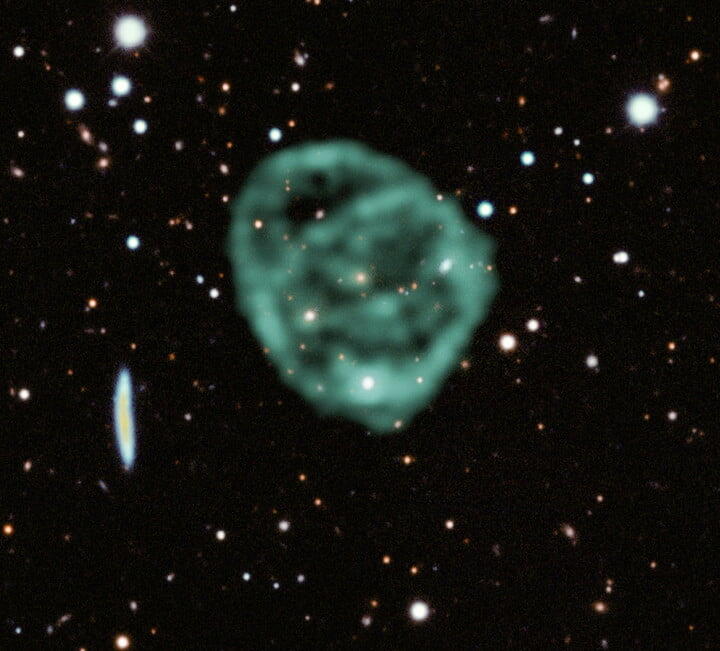Astronomers have spotted an enormous and mysterious object more than a million light-years across, called an odd radio circle (ORC). ORCs were first identified in 2019, and now researchers have released the highest resolution yet of the strange phenomenon.
The image was captured by the South African Radio Astronomy Observatory’s MeerKAT radio telescope, and astronomers are debating what the source of the huge circles could be. The objects have been detected using radio telescopes, but they seem to be invisible to optical, infrared, and X-ray telescopes.
The three leading theories for what the cause of the objects, according to the South African Radio Astronomy Observatory, are as follows: “They could be the remnant of a huge explosion at the center of their host galaxy, like the merger of two supermassive black holes; They could be powerful jets of energetic particles spewing out of the galaxy’s center; or They might be the result of a starburst ‘termination shock’ from the production of stars in the galaxy.”
The objects are almost incomprehensibly vast, and most seem to contain a galaxy at their center, which supports the idea that they could be formed by galactic processes. However, the fact they are only visible in the X-ray wavelength is very strange.
“We know ORCs are rings of faint radio emissions surrounding a galaxy with a highly active black hole at its center, but we don’t yet know what causes them, or why they are so rare,” said one of the authors, Ray Norris, in a statement.
The many open questions about these objects provide fertile ground for further research. The researchers are planning to look at the circles using sensitive radio telescopes like the upcoming Square Kilometre Array (SKA), an array of thousands of antennas spread across Australia and South Africa.
“People often want to explain their observations and show that it aligns with our best knowledge,” said another author, Jordan Collier of the Inter-University Institute for Data Intensive Astronomy. “To me, it’s much more exciting to discover something new, that defies our current understanding.”
The research is available as a pre-print and will be published in the Monthly Notices of the Royal Astronomical Society.











